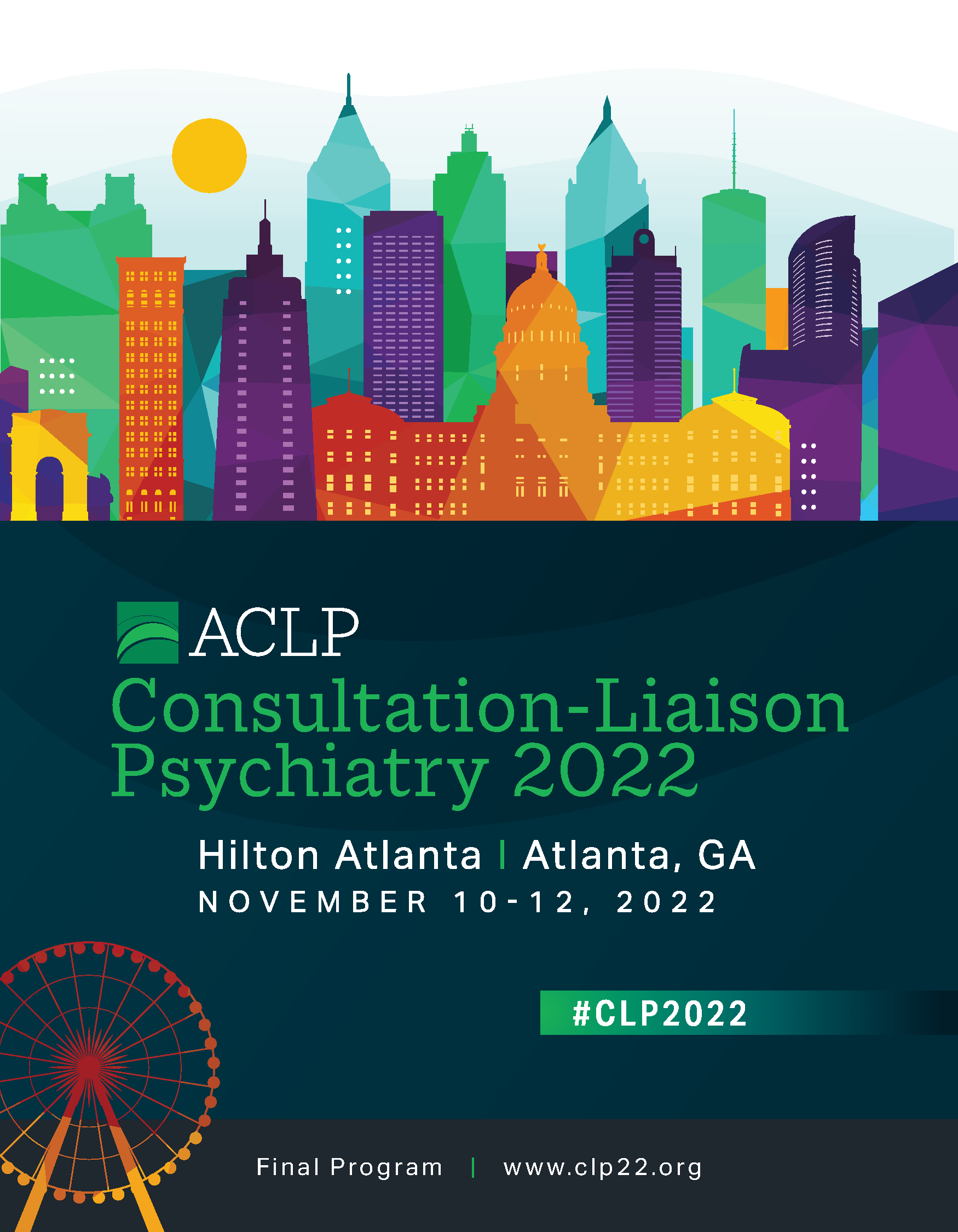Back
Brief Oral Papers
Session: Oral Presentation Session 05: Potpourri 1
HIV-Associated Neurocognitive Disorder (HAND): Review, Updates, And Controversies
Friday, November 11, 2022
11:00 AM – 12:30 PM
Location: Room 203
- AB
Ashika Bains, MD
Consultation-Liaison Psychiatrist
Massachusetts General Hospital
Boston, Massachusetts
Presenting Author(s)
Abstract:
Background: The advent of antiretroviral therapy has dramatically changed the landscape of HIV treatment and contributed to the substantially decreased rates of severe and progressive HIV-associated neurocognitive disorder (HAND). As such, the definitions of HAND have been updated to reflect current demographics and risk. Despite these advances, a significant amount of HIV patients perform below expectations on formal neurocognitive testing (Clifford 2013). HAND is associated with lower quality of life measures (Alford 2021). The aim of this presentation would be to provide an overview of current definitions, clinical presentation, proposed pathophysiology, treatment options, and discussion of controversies associated with HAND. Through education on this topic, psychiatrists can be equipped to recognize patients at risk and intervene early to optimize patient care.
Methods: Using a narrative review, articles relating to HAND from databases PubMED and MEDline were examined for synthesis of available information.
Results: HAND is subdivided into HIV-Associated Dementia(HAD), HIV-Associated Mild Neurocognitive disorder(MND), and Asymptomatic neurocognitive impairment(ANI) which vary in degree of severity. The CHARTER study was one of the landmark studies to compare clinical presentations of neurocognitive impairment and report on associated co-morbidities and risk factors (Heaton 2010). Proposed pathophysiology for HAND includes central nervous system (CNS) infection from the virus and the concept of CNS viral escape, neuroinflammation, side effect of antiretroviral therapy, and contribution from co-morbid conditions (Lindl 2010). Neither of these etiologies alone is sufficient to explain the prevalence of HAND. Antiretroviral therapies have varying CNS penetration-effectiveness (CPE) which may not be correlated with improvement in cognitive functioning. Supplementary to consideration of HAND are controversies regarding prevalence, screening guidelines, and utility of cerebrospinal fluid assays (Nightingale 2014).
Conclusion: Through education on current definitions, clinical presentation, proposed pathophysiology, treatment options, and discussion of controversies associated with HAND, psychiatrists can be prepared to recognize patients at risk and intervene early to optimize patient care.
References:
Alford K, Daley S, Banerjee S, Vera JH: Quality of life in people living with HIV-associated neurocognitive disorder: A scoping review study. PloS one 2021; 16(5): e0251944.
Clifford DB, Ances BM: HIV-associated neurocognitive disorder. The Lancet infectious diseases 2013; 13(11): 976-986.
Heaton RK, Clifford DB, Franklin DR, Woods SP, Ake C, Vaida F, ... & Charter Group: HIV-associated neurocognitive disorders persist in the era of potent antiretroviral therapy: CHARTER Study. Neurology 2010; 75(23): 2087-2096.
Lindl KA, Marks DR, Kolson DL, Jordan-Sciutto KL: HIV-associated neurocognitive disorder: pathogenesis and therapeutic opportunities. Journal of neuroimmune pharmacology 2010; 5(3): 294-309.
Nightingale S, Winston A, Letendre S, Michael BD, McArthur JC, Khoo S, Solomon T: Controversies in HIV-associated neurocognitive disorders. The Lancet Neurology 2014; 13(11): 1139-1151.
Background: The advent of antiretroviral therapy has dramatically changed the landscape of HIV treatment and contributed to the substantially decreased rates of severe and progressive HIV-associated neurocognitive disorder (HAND). As such, the definitions of HAND have been updated to reflect current demographics and risk. Despite these advances, a significant amount of HIV patients perform below expectations on formal neurocognitive testing (Clifford 2013). HAND is associated with lower quality of life measures (Alford 2021). The aim of this presentation would be to provide an overview of current definitions, clinical presentation, proposed pathophysiology, treatment options, and discussion of controversies associated with HAND. Through education on this topic, psychiatrists can be equipped to recognize patients at risk and intervene early to optimize patient care.
Methods: Using a narrative review, articles relating to HAND from databases PubMED and MEDline were examined for synthesis of available information.
Results: HAND is subdivided into HIV-Associated Dementia(HAD), HIV-Associated Mild Neurocognitive disorder(MND), and Asymptomatic neurocognitive impairment(ANI) which vary in degree of severity. The CHARTER study was one of the landmark studies to compare clinical presentations of neurocognitive impairment and report on associated co-morbidities and risk factors (Heaton 2010). Proposed pathophysiology for HAND includes central nervous system (CNS) infection from the virus and the concept of CNS viral escape, neuroinflammation, side effect of antiretroviral therapy, and contribution from co-morbid conditions (Lindl 2010). Neither of these etiologies alone is sufficient to explain the prevalence of HAND. Antiretroviral therapies have varying CNS penetration-effectiveness (CPE) which may not be correlated with improvement in cognitive functioning. Supplementary to consideration of HAND are controversies regarding prevalence, screening guidelines, and utility of cerebrospinal fluid assays (Nightingale 2014).
Conclusion: Through education on current definitions, clinical presentation, proposed pathophysiology, treatment options, and discussion of controversies associated with HAND, psychiatrists can be prepared to recognize patients at risk and intervene early to optimize patient care.
References:
Alford K, Daley S, Banerjee S, Vera JH: Quality of life in people living with HIV-associated neurocognitive disorder: A scoping review study. PloS one 2021; 16(5): e0251944.
Clifford DB, Ances BM: HIV-associated neurocognitive disorder. The Lancet infectious diseases 2013; 13(11): 976-986.
Heaton RK, Clifford DB, Franklin DR, Woods SP, Ake C, Vaida F, ... & Charter Group: HIV-associated neurocognitive disorders persist in the era of potent antiretroviral therapy: CHARTER Study. Neurology 2010; 75(23): 2087-2096.
Lindl KA, Marks DR, Kolson DL, Jordan-Sciutto KL: HIV-associated neurocognitive disorder: pathogenesis and therapeutic opportunities. Journal of neuroimmune pharmacology 2010; 5(3): 294-309.
Nightingale S, Winston A, Letendre S, Michael BD, McArthur JC, Khoo S, Solomon T: Controversies in HIV-associated neurocognitive disorders. The Lancet Neurology 2014; 13(11): 1139-1151.

